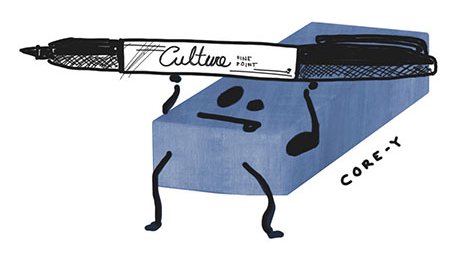
Illustration: Colin Forsyth
Empathy by design. (Ideas that understand their customer)
I habitually challenge every creative to walk in the shoes and experience the plight of the customer that you’re creating for. Also, make sure you mine the data around this experience to help draw even more conclusions than what you experienced personally. Once you feel the challenge and also determine how others will feel it, you can design experiences that have emotional resonance and that fill the unmet needs of your customer. That’s the gap that needs closing. Your empathy and understanding enhanced by data can help close it. But only if you take the time to experience it and read between the data lines. Designs that are empathic will have a greater ability to change behavior because they connect people and brands.
Feel health
The thing about health is that no matter the customer, one feels it in some capacity. This alone makes the notion of empathy a pretty obvious one. That said, not everyone thinks or creates this way. Frankly, it’s a missed opportunity for the customer, which is ultimately a miss for the brand. When you feel health both positively and negatively, it activates the imagination while you’re in the process of feeling. Take this a step further and it’s a method of inspiration.
Empathy that inspires designs
When brainstorming and conceiving various designs, you have to ask yourself, “What does it feel like to be these customers in the broadest sense of the word? What are their overarching obstacles?” Get more granular as you’re feeling what it’s like to be them and ask yourself, “What does their health journey feel like? How do they experience their day? And when do they interact with content because they have a need?”
Walking in their minds
Walking in the shoes of your customers puts you in their mindset and in their skin, and has you feel what they go through. This gives you the ability to inspire real-world solutions to their problems versus the pat promotional advertising that is a brand talking at you and pushing product. In today’s environment, a great brand understands this unmet need and solves for it. Great brands recognize that it hasn’t been a brand-centric world for a while, that it’s a customer-centric one, and they need to create value-added services and products that solve customer’s problems.
Data drives greater empathy
And leverages data. While data seems cold in the way that it’s expressed, it’s actually the opposite. It gives you more personal information about each customer and allows you to find greater insights into that customer’s daily experience. It’s like an onion—the more you peel it back, the more layers you recognize there are in your customers’ everyday health journeys. This knowledge and understanding affords yet another window into their world and inspires deeper ways to think about designing for them.
Design for the user
As you begin to solve your next brief, start with experiencing a day-in-the-life of your customer. Take the walk; spend the time feeling your customers’ ups and downs. And then think about ways that your brand can help solve their problems. This can be any form of educational and branded content in the more traditional sense of the word; it can also be products and services that make their health experience a better more accessible one. Create meaningfully and authentically for the user and in ways that understand their personal or professional health journey. The deeper you go with the thinking, the greater the opportunity for your brand to create solutions to their problems.



